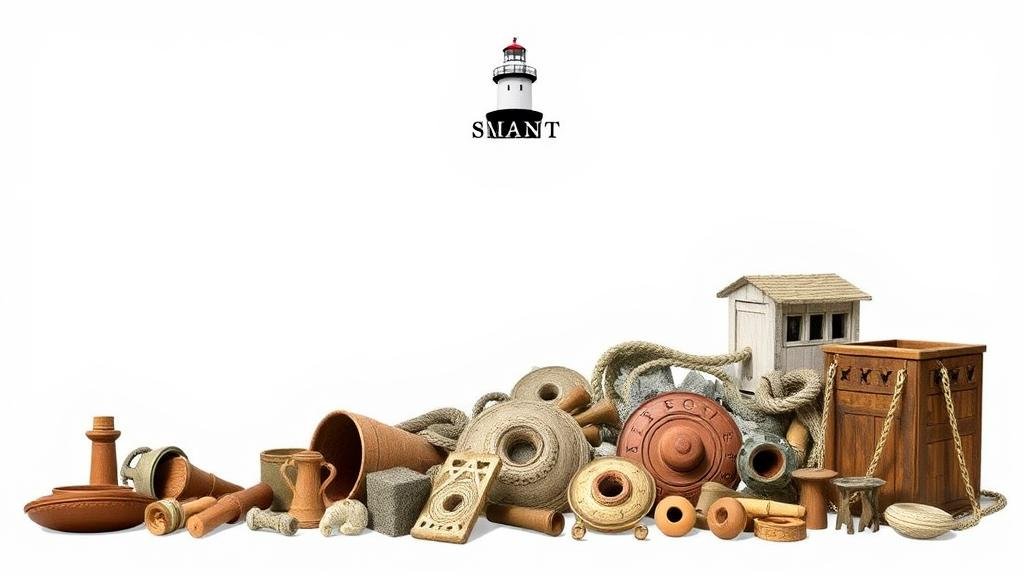Mining Historical Lighthouse Supply Inventories for Coastal Artifacts
Mining Historical Lighthouse Supply Inventories for Coastal Artifacts
The documentation and study of historical lighthouse supply inventories serve as a rich source of information regarding maritime history, coastal economies, and the evolution of navigation. Analyzing these inventories allows researchers to uncover insights into the more significant maritime practices and the broader socio-economic contexts of coastal communities. This article aims to provide a structured overview of the methodology, findings, and implications of mining historical lighthouse supply inventories for coastal artifacts.
Introduction
Lighthouses have long been indispensable components of maritime navigation, guiding seafarers safely through treacherous waters. Established in various countries, these structures were supported by extensive logistical systems which involved the management of supplies and equipment. Historical lighthouse supply inventories, framed within the context of maritime infrastructure, can be utilized as key resources for understanding coastal artifacts. A focused analysis of these inventories can yield valuable insights into regional maritime practices, trade routes, and historical economic conditions.
Methodology
To effectively mine historical lighthouse supply inventories, researchers typically follow a systematic methodology:
- Data Collection: Historical inventories are collected from archives, libraries, and lighthouse museums. Notable repositories include the National Archives in the United States and The National Archives in the United Kingdom.
- Data Extraction: Specific information, such as supply quantities, types of artifacts, and shipment dates, is extracted from the records.
- Data Analysis: Researchers employ qualitative and quantitative methods to analyze patterns, trends, and anomalies within the supply data.
- Artifact Correlation: The findings are correlated with existing archaeological records and other historical sources to identify links between the inventories and coastal artifacts.
Historical Context
The period following the establishment of the first American lighthouse at the Boston Harbor in 1716 marked significant advancements in coastal navigation. As lighthouses proliferated, especially in the mid-19th century, logistical frameworks for their maintenance emerged. For example, the United States Lighthouse Board was created in 1852, enhancing the efficiency of supply management.
Research shows that in the 1930s, the U.S. Lighthouse Service maintained detailed records of supplies used across its lighthouses, including oil, maintenance tools, and maritime navigation equipment. For example, the 1935 supply inventory from the Cape Hatteras Lighthouse in North Carolina documented over 300 gallons of kerosene alone, illustrating the operational demands of maintaining lighthouse functions against the forces of nature.
Findings
The analysis of historical lighthouse supply inventories has yielded several critical findings regarding maritime artifacts:
- Artifact Diversity: The inventories reveal a diverse range of supplies, including navigational instruments, fresnel lenses, and signaling equipment. For example, a study of the 1875 inventory for the Point Reyes Lighthouse yielded artifacts such as a brass bell and several glass lantern panels.
- Trade Networks: The origins of supplies indicate extensive trade networks. Artifacts were often sourced from locations far removed from the lighthouses themselves; shipments from Europe to U.S. lighthouses highlight early globalization in maritime trade.
- Technological Advances: Changes in inventory over time correlate with advancements in technology. The transition from whale oil to electric lights in the late 19th century is clearly documented in lighthouse supply records.
Case Studies
Two notable case studies illustrate the effectiveness of mining lighthouse inventories:
- San Francisco Lighthouse (1850s): An analysis of supply inventories from the 1850s revealed not only typical maintenance supplies but also artifacts related to shipwreck recovery efforts, reflecting a broader maritime culture focused on safety and recovery.
- Florida Keys Lighthouse (1900s): The inventory from the Dry Tortugas Lighthouse in 1902 indicated that a substantial portion of the supplies was geared towards supporting military vessels during the Spanish-American War, showcasing the interrelation between lighthouses and contemporary historical events.
Implications
The implications of this research extend beyond mere artifact recovery. Understanding historical supplies used in lighthouses contributes to:
- Cultural Heritage Preservation: This research supports the preservation of artifacts that reflect maritime heritage.
- Economic Analysis: It provides insights into coastal economies and the industries that supported lighthouse operations.
- Recreational Education: Historical data can also enhance tourist engagement in coastal areas by providing contextual narratives.
Conclusion
Mining historical lighthouse supply inventories is a critical endeavor for uncovering coastal artifacts and understanding maritime history. This research not only enriches our knowledge of past technological and economic practices but also provides a framework for the preservation and appreciation of maritime heritage. Future investigations should focus on the digitalization of these records to enhance accessibility and facilitate broader analysis by scholars and the public alike.
Actionable Takeaways
Researchers interested in this field can take the following actions:
- Engage with local historical societies and maritime museums to access lighthouse supply records.
- Use digital archival databases to facilitate comparative studies across different regions.
- Promote awareness of the importance of maritime history through educational programs and public exhibitions.
To wrap up, the interplay between historical lighthouse supply inventories and coastal artifacts provides a fertile ground for academic inquiry, with significant implications for cultural heritage, economic studies, and public education.



